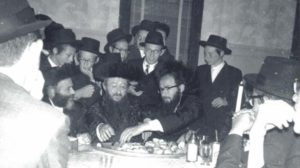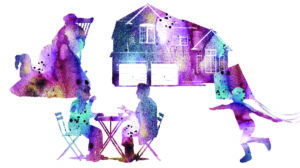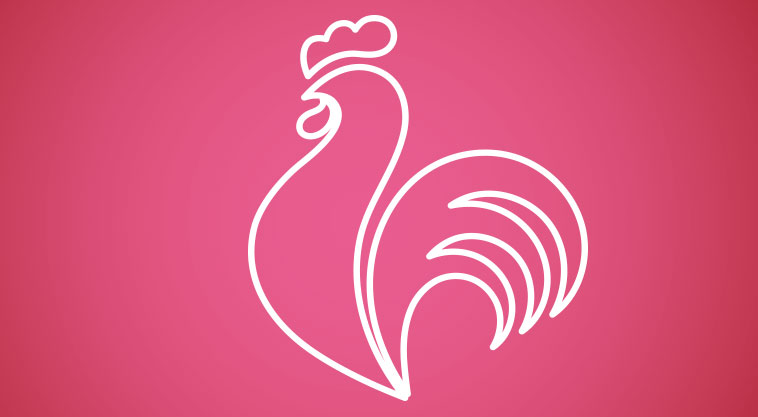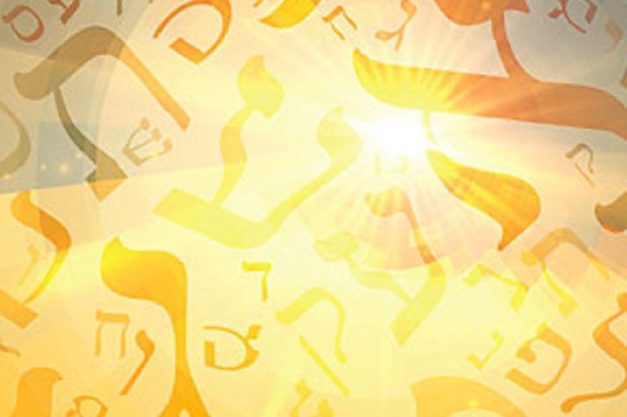An Equal Focus

Remaining true to our most authentic feminine selves
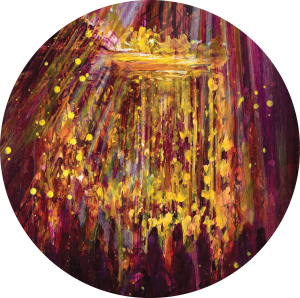
"All men are created equal” is an axiom in the secular world.
But when we look at the structure of Jewish society, it seems that we don’t subscribe to this axiom. After all, some people are born Kohanim, others Leviim, others Yisraelim. Kohanim are treated with greater respect than other Jews, even without a Beis Hamikdash.
Likewise, there’s a difference between men and women. These differences are reflected in halachah, too. It’s with this mindset in place that we can begin to understand the brachah that men say, “for not making me a woman,” and the brachah women say, “for making me according to His Will.”
The normative understanding of this brachah is that men are thanking Hashem for the opportunity to have been commanded to do all the mitzvos — even those which are time-bound — and learning Torah lishmah, from which women are exempt.
Rav Alexander Mandelbaum in Aromimcha Elokai HaMelech, however, draws a further distinction. There are two main ways to access G-dliness in This World, which are reflected in the two types of mitzvos: positive and negative. Positive mitzvos actively bring down Hashem’s presence into This World — this is the domain of men. However, there are also the negative mitzvos, which ensure that we don’t become affected by the physicality and coarseness of this world. Women, who are known as receivers, are obligated in these mitzvos.
In Rigshei Lev Rabbi Menachem Nissel points out that the word for father, av, is related to the word avah, meaning unbridled desire. On a conceptual level, man is the one who infuses the world with creative energy and initiative. Eim is related to the word im, if. The women are the ones who nurture and guide, ensuring that what enters our world is appropriate for our role and mission. When reciting this brachah, both men and women thank Hashem for their specific roles.
Rav Ephraim Fordsham in Lefanav Naavod notes that the Torah describes man’s original job in Gan Eden as l’avdah u’l’shamrah. Chazal explain this to mean to learn Torah and keep the mitzvos. Woman, by contrast, was created to be an ezer k’negdo, to be a helpmate to Adam.
Rav Sternbuch, in Sefer Taam V’daas, compares men to the guards who circle and secure the palace, who are constantly close to the king. This position brings tremendous honor and prestige. Men, who are involved in learning Torah, are “close to the King,” and they acknowledge this with thanking Hashem in this brachah each morning. Women are compared to the soldiers who guard the territory of the king to ensure enemies don’t infiltrate.
Rav Sternbuch describes this job as one of central importance. Women are on the front lines. They ensure the sanctity of the home, and must be vigilant that only positive influences enter the lives of their families. A woman’s role is both guarding the home as well as supporting her husband in his learning and ability to properly fulfill the mitzvos.
Respective Roles
Question: Whose role is more important?
Answer: Both are crucial.
Rather than play the comparison game, which essentially focuses on me, our Sages redirect our vision. Our focus should be outward and upward: focused on how we can use our unique essence in serving Hashem and fulfilling the tasks He wants us to perform.
Rav Ephraim Fordsham emphasizes that just as a king needs both types of soldiers to maintain his kingdom, Hashem created men and women with their respective roles. As seen in the brachah of “she’asah li kol tzarki,” in which we thank Hashem for fufilling all our needs, as women we can first recognize, and then internalize, that we’ve been given everything necessary to best serve Hashem according to our individual capacities.
What does this mean on a practical level? Rav Shimshon Pincus ztz”l gave a thought-provoking example. Imagine you’re holding a bar mitzvah in your home and therefore have borrowed an aron kodesh for Shabbos. The aron kodesh is in your living room.
How would that affect the family’s behavior over Shabbos? The kids begin to bicker, and then look around, swallow, and quiet down. Someone might pick up some reading material, only to feel uncomfortable perusing it in the presence of the sefer Torah.
Each and every child, each and every Jew, is a living sefer Torah, explains Rav Pincus. Each of us is imbued with a sanctity that cannot be understood or measured. It’s a woman’s job to guard these precious precincts: It is she who can guard her community and environment. Above all, she’s sensitive to the true value of our inner selves, the place where our tzelem Elokim resides. Therefore, it’s the woman who must ask herself: How do I maintain the sanctity of my inner self? How do I cultivate both idealism and authenticity?
The word for woman, ishah, is similar to that for man, ish. The only difference is the hey, which hints at Hashem’s Name. As a woman safeguards her home, her children, and her very essence, Hashem is by her side.
The Sun and the Moon
Rav Pincus in Nefesh Shimshon asks an interesting question. He categorizes the first three brachos — thanking Hashem for not making me a non-Jew, a slave, and a woman — as giving thanks to Hashem for a person’s essential existence. If this is the case, why are these brachos couched in the negative form?
By framing each brachah in the negative, we harness the power of contrast. When we thank Hashem for not making us slaves, for example, we’re drawn to think of the opposite: slavery. Our gratitude is so much more meaningful when we consider the alternative. The shadow of darkness helps us appreciate the light.
But women do not thank Hashem for “not making me a man.” This is the highest level of thanks — appreciating that Hashem made us exactly as His Will.
In Nefesh Chaya, Rav Pincus develops this idea even further. He compares man to the sun, a generator of light and energy. Indeed, the man radiates Torah and mitzvos.
A woman is compared to the moon. She doesn’t generate her own light; she reflects what she turns toward. A woman who turns to spiritual pursuits, making Hashem the focus of her life, will reflect Him.
Let’s explore this in greater depth.
Say you have two items on the wall: a mirror and a portrait of the Chofetz Chaim. Which one is has greater spiritual significance? It depends what the mirror reflects. If the mirror reflected a cat sitting on the stairs, the portrait would be greater. But if the mirror showed the reflection of Yehoshua Bin Nun, the mirror would obviously carry the day.
Women, built with the capacity to reflect and then shine the light they have received, have a choice. If they reflect Torah ideals and values, they can reach even higher levels than men, who are confined by their own limitations.
Women, then, have been given an awesome responsibility: to constantly assess the source of their light. To be aware of what they reflect, and focus their energy on meaning and spirituality. Their compass needs to be constantly finely attuned for them to live the life that Hashem had envisioned. In this way, a woman will receive her kedushah directly from Hashem — she’s an expression of Hashem’s ratzon. This brachah challenges a woman to lead her day as a reflection of the Will of Hashem.
The Giving Role
Rav Avrohom Schorr in Halekach Vehalebuv offers another understanding of the words “she’asani kirtzono.” He explains that Hashem created the world with the purpose of giving and helping others. The giving role is the role Hashem desires for all humanity. The pasuk in Tehillim clearly states “ki… olam chesed yibaneh” (89:3), the world is built and predicated on doing acts of kindness to one another. Women were given a special connection to this. Women were created to help, encourage, and support their families, friends, communities, and the entire Jewish world.
The significance of the first sin was that woman, designed as a helper, was the one who brought man and ultimately all the world down to the abyss. Every morning, when women say this brachah, they’re reminded of the role Hashem has envisioned for them. Whether in the home or in the community, women need to maintain their knowledge that their raison d’être is to be a giver, a helper, the vision of the ultimate Will (kirtzono) Hashem intended in creating the world. To be a giver is to wear a badge of pride: In reaching out and giving of our selves, whether physically or emotionally, we’re fulfilling the task that Hashem envisioned for us. In doing so, we’re remaining true to our most authentic feminine selves.
(Originally featured in Family First, Issue 576)
Oops! We could not locate your form.


